Food Forest o Edible Forest Garden o Gaia’s Garden
Cominciamo col riportare alcune definizioni
Toby Hemenway
Gaia's Garden
A guide to homescale Permaculture
2000
… a multistoried forest garden [is] a food- and habitat-producing landscape that acts as natural woodland.
In a forest garden, the yard is a parklike grove of spreading fruit trees, walnuts, chestnuts, and other useful trees.
In the bright openings are smaller persimmon trees, plums, cherries, pawpaws, and a few ornamentals such as golden-chain trees [Laburnum anagyroides e Laburnum alpinum] and pink-flowered silk trees [Albizia julibrissin] (which just happen to fix nitrogen). Catching the sun farther down, dancing with birds, are flowering shrubs and berry bushes. Occasional honeysuckle and hardy kiwi vines wind up tree trunks, leaving a trail of blossoms and fruits.
Beneath all this and in the bright edges are beds of perennial flowers, vegetables, and soil-building mulch plants.
….
Plant guilds weave this many-layered garden into a cohesive whole, and the many-functioned flora extends a welcome to helpful insects, birds, and other wildlife, as well as to people.
The major trees and shrubs are spaced to let the sun fall between [them], and plants in the lower layers are placed in the sun or shade according to their appetite for light.
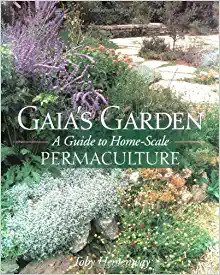
Patrick Whitefield
How to make a forest garden
2002
A forest garden is a garden modelled on a natural woodland.
Like a natural woodland it has three layers of vegetation: trees, shrubs and herbaceous plants. In an edible forest garden, the tree layer contains fruit and nuts trees, the shrub layer soft fruit and nut bushes, and the ground layer perennial vegetables and herbs.
The soil is not dug, and annual vegetables are not normally included unless they can reproduce by self-seeding.

Jacke Dave and Toensmeier Eric
Edible Forest Gardens
Ecological Vision and Theory for Temperate Climate Permaculture
2005
An edible forest garden is a perennial polyculture of multipurpose plants.
Most plants regrow every year without replanting: perennials.
Many species grow together: a polyculture.
Each plant contributes to the success of the whole by fulfilling many functions: multipurpose.
In other words, a forest garden is an edible ecosystem, a consciously designed community of mutually beneficial plants and animals intended for human food production.
Edible forest gardens provide more than just a variety of foods.
The seven Fs apply here: food, fuel, fiber, fodder, fertilizer, and pharmaceuticals, as well as fun.
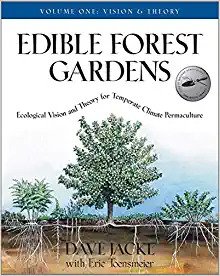
Crawford Martin
Creating a forest garden
Working with Nature to grow edible crops
2010
A forest garden is a garden modelled on the structure of young natural woodland (opposite of grassland), utilizing plants of direct or indirect benefit to people – often edible plants.
It may contain large trees, small trees, shrubs, herbaceous perennials, herbs, annuals, root crops and climbers, all planted in such a way as to maximize positive interactions and minimize negative interactions, with fertility maintained largely or wholly by the plants themselves.
A forest garden is a carefully designed and maintained ecosystem of useful plants (and perhaps animals too).

Anni Kelsey
Edible Perennial Gardening
Growing successful polycultures in small spaces
2014
A garden designed by people but directed by nature.
A well-balanced polyculture is a team [of plants] that shares the available resources to the advantage of the whole team (guild).
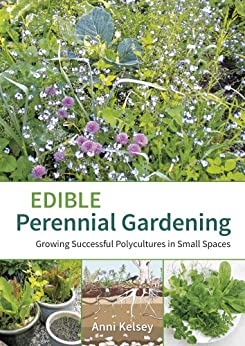
W. Weissman, D. Halsey, B. Ruddock
Integrated Forest Gardening
2014
Forest gardening is the act of creating and maintaining food forests.
A food forest, in turn, is a deliberately designed, high yielding, perennial plant system developed by human beings for their sustenance.
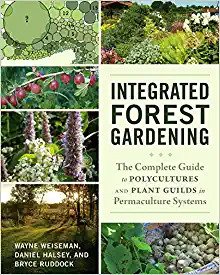
Darrell Frey and Michelle Czolba
The Food Forest Handbook
Design and Manage a Home-Scale Perennial Polyculture Garden
2017
A food forest garden is a mix of perennials and annuals designed to be both beautiful and to produce abundance of fruit and vegetables, herbs, and flowers. More specifically, the food forest is a perennial garden built around useful trees and designed to mimic a managed forest ecosystem.
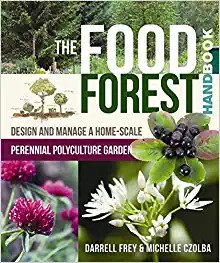
Tomas Remiarz
Forest gardening in practice
2017
A forest garden is a place where nature and people meet halfway, between the canopy of trees and the soil underfoot.
It doesn’t have to look like a forest – what’s important is that natural processes are allowed to unfold, to the benefit of plants, people, and other creatures.
Forest garden stands as a generic term for multi-layer perennial plantings, and for small scale and home gardens in particular.
Food forest will denote larger scale plantings, often in communal, public or commercial settings, though some plantings on farms and small holdings also fall into this category.
Agroforestry will mean larger simplified set-ups for commercial or research project.
Polycultures and Edible Ecosystems are overarching terms for designed multi-species assemblies, and where a particular planting does not fit into any of the other categories.
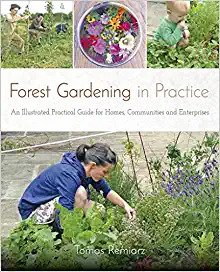
Ciro Zanin
Una Food Forest a Staffolo
Da Terreni Coltivati a una Food Forest
2020
Una Food Forest è un sistema complesso vivente, sostenibile nel lungo periodo,
- caratterizzato dalla presenza di organismi e loro precursori e derivati:
- virofagi, profagi, plasmidi e transposoni (questi quattro detti nel loro insieme mobilomi),
- virus,
- bacteria,
- archaea,
- alghe,
- piante terrestri (bryofita, lycophyta, polypodiophyta, gimnospermae, angiospermae), fra cui gli alberi come comunità primaria dominante,
- funghi e licheni,
- altri microrganismi eucarioti non fotosintetizzanti e
- animali,
che interagiscono tra loro all’interno delle matrici gaiane del luogo (aria, acqua e suolo),
inondati dalla radiazione solare e dalla radiazione terrestre (fonti di energia), - progettato in 4D (la quarta dimensione essendo il Tempo) seguendo gli insegnamenti della Natura,
- bloccato, nella successione ecologica, a uno stadio antecedente lo stadio finale di equilibrio dinamico (climax),
- realizzato dall’uomo per l’uomo, primariamente per ottenere cibo.
O, brevemente, una food forest è un agrosistema 1 in cui gli alberi sono gli organismi dominanti, progettato mimando la Natura, e realizzato per uso umano, primariamente per ottenere cibo.
1. Ricordo che, nel mio gergo tecnico, un agrosistema è un sistema ambientale che appartiene all’insieme degli antroposistemi e non all’insieme degli ecosistemi. Leggi il post Sistemi Ambientali per le definizioni di sistema ambientale, ecosistema e antroposistema.
Plants for a Future - Chris Marsh
Plants for your Food Forest
2021
A food forest is a form of regenerative farming, a designed ecosystem modeled on nature, with the aim of growing food and sequestering carbon at the same time.
As a food forest, it will consist of plants that occupy different layers, typically a canopy layer, shrub layer, herb layer, and climbers.
All plants will be perennials in order for the soil to be wild, undisturbed, and regenerating.
All plants will be food-producing, will sequester carbon in their woody parts and in the soil, and will have useful functions in the forest ecosystem.
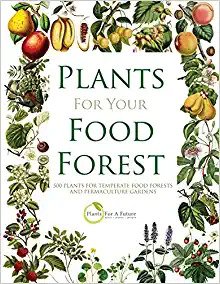
Alan Carter
A Food Forest in your Garden
2021
[My forest garden] feeds me, feeds the wildlife, builds the soil, and lifts the heart, all at the same time.
My forest garden produces a similar amount of food to an annual garden of the same size, but I get a garden full of wildlife and a beautiful place to be at the same time, for free.
The full advantages of an agroecosystem only emerge when you consider the system as a whole, with its qualities of diversity, complexity, and connectedness.
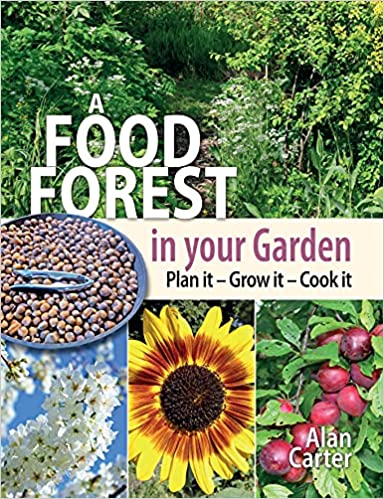



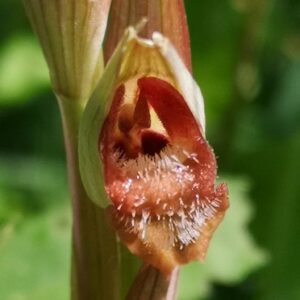
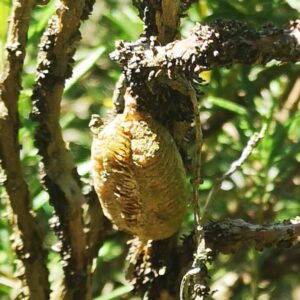

This Post Has One Comment
Pingback: Quale agricoltura per un futuro sostenibile? - La Via Antiga